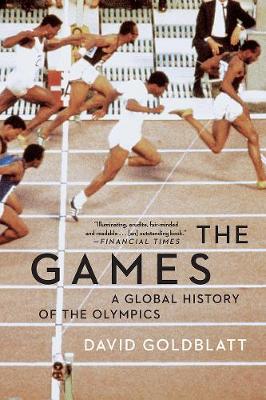Reviewed by gmcgregor on
This book is packed with information, and I learned quite a lot by reading it about how the Olympics have grown and changed from their genesis as the dream of Pierre de Coubertin to display the best in white upper-class male sporting accomplishment to their gradual (and often reluctant) inclusion of women, people of color, and commoners. I was surprised by just how many of things I think of as hallmarks of the Olympics: mascots, the torch-lighting ceremonies, the Winter Games, the offsetting of the schedules between Winter and Summer so there are Olympics every two years, are relatively recent additions. And it's astonishing how low-budget they used to be until very recently, and how the ways that different governments have approached their infrastructure projects have created very disparate outcomes.
While Goldblatt does good work separating the modern Olympics into eras and providing a brief introductory chapter linking the themes that arched across all the Games in a particular era, there wasn't as much narrative flow as I tend to prefer in my nonfiction. It's not that his prose is clunky (indeed, it moves very well considering its fact-intensiveness), it's that he seems to be someone, at least in the way he wrote this book, who can't see the forest for the trees. His research was clearly rigorous, and it sometimes feels like he was so enthusiastic about sharing what he uncovered that he lets himself get bogged down by trying to fit in as much as possible. This made for slow reading, because I had a hard time going more than 15-20 pages before I felt like I needed a mental break, and that's not usually true for me, not even for nonfiction.
But if you're looking for a deep, well-structured resource for the history of the last 100ish years of the Olympics, this is the book for you. If you're looking for more information about the winter Games in particular, though, you might be disappointed...they began later and even today seemed to be popularly considered the lesser of the two, but Goldblatt pays them very short shrift indeed...I'd estimate the percentage of this book that deals with them to be 10% or less. Also, if you're looking for stories about the athletes themselves, by and large this won't be where you'll find it. It's mostly about the structures and logistics and international pressures that have grown and created and challenged the Olympics. If that's what you're into, you'll love it. And while it's a very competent book at what it's trying to do, I don't think I'd recommend it to a wide audience...it's too dense and specialized to have broad appeal.
Reading updates
- Started reading
- 11 December, 2017: Finished reading
- 11 December, 2017: Reviewed
